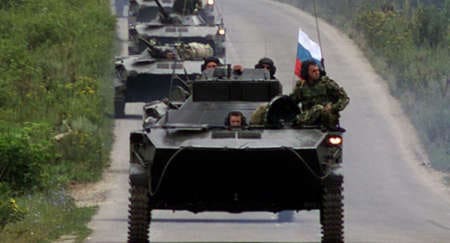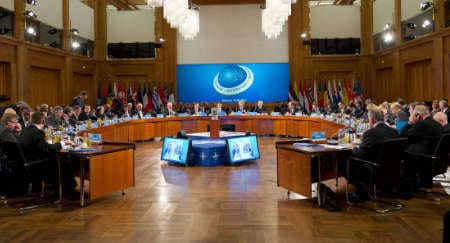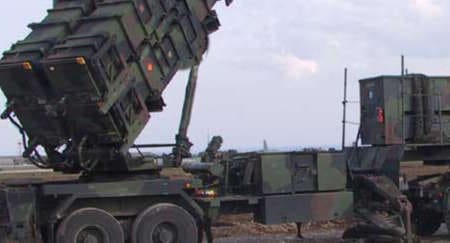That NATO and Russia are partners is not in dispute, argues Vincent Pouliot. The problems start though when it comes to defining who is the senior partner. And on this, a largely polite, but ongoing, disagreement seems to characterise the relationship.
Twenty years after the dissolution of the USSR, the terms of the NATO-Russia relationship remain unsettled. A lot of today’s diplomacy is still devoted to clarifying each side’s rank and role in European and international security. Substance is generally not an issue: by both sides’ accounts, shared interests and common threats abound in the 21st century. But symbolic power struggles, which continue to structure Russian-Atlantic relations, often impede tangible cooperation.
This problem has been around for almost a generation.
Take, for instance, what may have been the most successful instance of NATO-Russia security cooperation in the post-Cold War era: the Stabilization Force (SFOR) in Bosnia. In preparation for peacekeepers deployment, in 1995, American and Russian negotiators had to devise a cumbersome command structure by which Russian soldiers would be put under General Joulwan’s authority, not as SACEUR and commander of NATO troops in Bosnia, but as American Commander in Chief in Europe. At the origin of this hard-fought agreement were, on the one hand, the American desire to keep full control over the mission and, on the other, Russia’s stark refusal to serve under a NATO flag.
A few years later in 1999, while negotiating a similar peacekeeping arrangement over Kosovo, NATO was so decided to get its way, and the Russians incapable of conceding to Brussels, that the symbolic stalemate turned into a dangerous military standoff at the Pristina Airport. For the first (and only) time in post-Cold War history, disputes over the new rules of the security game led NATO and Russia to the brink of real conflict.
There are two masters but no apprentice in Russian-Atlantic security relations
These episodes, in their gravity and intensity, may appear exceptional. But in fact they illustrate pretty well a persisting feature of post-Cold War NATO-Russia diplomacy: an acute difficulty to agree on the terms of the diplomatic relationship. Both sides want to lead but not be led. As I put it in my book, there are two masters but no apprentice in Russian-Atlantic security relations.
Throughout the post-Cold War era, the Alliance has enjoyed an unprecedented ride in the driver’s seat of international security. Its unparalleled resources, both material and symbolic, have drawn a line-up of membership applicants eager to change themselves and adjust to Brussels’ requirements. Through seminar diplomacy, joint exercises, and other mechanisms, the Alliance was able to exert enough authority to transform the social and political fabric of many European countries.
This teacher-and-pupil approach, however, yielded few results with the Russians. After a short-lived honeymoon during which Moscow seemed happy to play the junior partner, Russia has grown increasingly frustrated with what it perceives as NATO diktats. In all of its diplomacy, the main objective appears to obtain recognition as an “equal partner.” Contrary to most other countries in the post-Cold War era, Russia comes to Brussels not to emulate the Alliance, but in hopes of being acknowledged as a security heavyweight.
When rank and role are not settled, expectations clash.
This is a constant feature of NATO-Russia diplomacy, as several dozens of interviews with diplomats revealed. Even on trivial issues, the same negotiation structure quickly emerges: the Russians will settle for nothing short of equality treatment, which they almost never get; while NATO hopes to pull Russia closer through talking, which is most of the time insufficient. As a result, diplomacy is often monopolised by bickering over process, as opposed to substantive bargains.
The NATO-Russia Council (NRC) exemplifies this logic. From its very creation, the NRC—as well as its predecessor, the Permanent Joint Council—was the result of incompatible expectations. NATO wanted to engage with Russia - but only to an extent and without constraints. Moscow, for its part, was looking for an exclusive forum where significant matters of European security would be decided on equal terms. The mismatch got even worse after the Georgia War, which aroused fears among many of the newer Alliance members.
Russia does not want to play Brussels’ junior partner; and NATO is unprepared to let Moscow constrain its freedom
While far better than nothing, the NRC is structured in such a way that it tends to exacerbate, not dampen, symbolic tensions. Despite all the talk to the contrary, the NRC cannot be “working as a forum of 29 equal partners,” to borrow the Lisbon Declaration’s language. By its very geometry, it brings together a tightly knit group of allies with an outsider who can all too easily be pushed aside—when it does not corner itself on its own.
There is certainly a lot that the NRC can do and it deserves the best energy from both Russia and the Alliance. But so long as it remains a meeting of 28 family members with their neighbour next door, expectations need to be reasonable.
With the benefit of 20 years hindsight, we now know a few things for a fact. To put it bluntly, Russia does not want to play Brussels’ junior partner; and NATO is unprepared to let Moscow constrain its freedom. For better or for worse, these rules of the game are unlikely to change anytime soon. In this symbolic standoff, one should note, nobody is inherently right or wrong; the tension is relational, not individual. Moral blaming is part of the problem, not the solution. The limiting effects on security cooperation, meanwhile, are real enough.
Take the current negotiations over ballistic missile defense. Admittedly, the main bone rests not with threat assessment—Moscow and Brussels both seem to fear rogue nuclear states such as Iran—but with the terms of the cooperative endeavour. NATO, and in particular America, wants to keep full control of the system and therefore advocates “cooperation between two independent systems.” By contrast, Russia looks for “equal democratic access to managing” the BMD (ballistic missile defence) system, in Prime Minister Putin’s words. Its proposal of an integrated, sectorial missile defence system would entail a dual-key arrangement—a particularly deep level of security integration.
As NATO’s internal deliberations confirm, even among decades-old allies, the deep political commitment, sharing of sensitive and complex technologies, and financial burden required to develop a joint BMD system are overwhelming. With the Alliance unwilling to constrain itself with extended Russian participation and Moscow desiring just that, chances are that BMD is not the right “reset button” to push at this point.
Alternatively, diplomatic energy may be redirected at an equally pressing matter whose shared ownership makes symbolic power struggles less likely to emerge: nuclear disarmament.
By all accounts, it is startling that NATO-Russia relations remain structured by nuclear deterrence more than 20 years after the end of the Cold War. The political fight is long gone, yet thousands of warheads remain. This makes no financial sense in these hard economic times. It makes no political and strategic sense either: deterrence is incommensurate with the politics of today’s relationship—and in any event it does not require current levels of armament and alert.
Diplomacy is not so much about persuasion, or even compromise, as it is about the mutual adjustment of expectations
The nuclear arms race was a joint product of Moscow and NATO allies in a by-gone era of confrontation. Dealing with the fallout is, in the deepest sense of the term, a shared responsibility. The material incentives to disarm are huge; the symbolic payoffs are just as well. This is an opportunity for both parties to enjoy equal ownership of a peaceful initiative that would not fail to enlist other countries of the world. The political and strategic wind is blowing in the direction of nuclear disarmament; now is the time for Russia and NATO to re-assume world leadership together, while reaping significant benefits for themselves and putting their relationship on more fruitful tracks.
Diplomacy is not so much about persuasion, or even compromise, as it is about the mutual adjustment of expectations. This requires taking note of how the terms of NATO-Russia relations have been set in the past 20 years.
The Alliance will not vacate the driver's seat of European security in the foreseeable future. With its unparalleled resources and standing, “NATO is not going to outsource the defence of a NATO Allies to third countries,” to use Secretary General Rasmussen’s words. The Russians, meanwhile, will continue to claim an equal status and strive for influence over the Alliance’s decisions, even at the expense of substance.
It is up to each actor to judge the legitimacy of these claims; but without doubt they are here to stay. Unless mutual expectations are readjusted, NATO’s traditional approach of waiting for the Russians to come around and understand that their country is not anymore the Great Power that it used to be appears doomed to fail; and Moscow’s age-old concern for status will keep meaningful cooperation hostage to symbolic power struggles.
After 20 years of half-hearted cooperation embroiled in fights over the new rules of the security game, it is time for NATO-Russia diplomacy to become less introspective and open up to the outside world. Nuclear disarmament seems a great opportunity to do just that.



